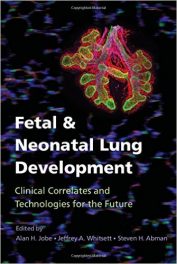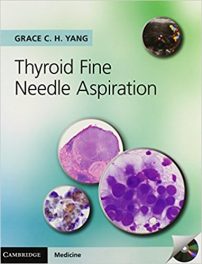 Editors: Laurie E. Bernstein, MS, Fran Rohr, MS, and Joanna R. Helm, MS
Editors: Laurie E. Bernstein, MS, Fran Rohr, MS, and Joanna R. Helm, MS
Publisher: Springer – 377 pages
Book Review by: Hiro Motiram
Inherited metabolic diseases (IMDs) are a large class of genetic diseases, and are sometimes called “inborn errors of metabolism” or “congenital disorders of metabolism,” according to articles in Wikipedia. More than half of them are due to defects in single genes that code for enzymes, which help convert various substances (substrates) into others (products).
There’s a wide range of IMDs that are manifested in patients who have various signs and symptoms. We name here a few groups of them:
- Ambiguous genitalia, delayed and precocious puberty
- Blindness, deafness, pain agnosia
- Cancer – many forms
- Congenital malformations
- Dental abnormalities
- Depression, psychosis, abnormal behavior
- Excessive urination, dehydration, edema, kidney failure
- Growth failure, weight loss
- Hypothyroidism, hypogonadism, adrenal insufficiency, diabetes mellitus
- Immunodeficiency, low red blood cell count, enlarged lymph nodes and-or spleen
- Jaundice, liver enlargement, liver failure
- Joint pain, cramps, muscle weakness
- Low blood pressure, enlarged heart, hypertension, heart attack, heart failure
- Recurrent vomiting, abdominal pain, diarrhea
- Skin rash, abnormal pigmentation, excessive hair growth
This book on IMDs has been written primarily for doctors, dietitians, geneticists, nurses, nutritionists, and other specialists involved in caring for patients with inherited metabolic diseases (IMDs) or studying them. The chapters have been written by 14 people including the editors who teach at Metabolic University (MU) which provides an interactive, didactic, educational program. This institution has trained about 350 professionals in health care since 2006.
We provide you below an overview of what you will find in this book by naming the titles of its 27 chapters allocated among five sections.
- Background
- Introduction to Genetics
- Expanded Newborn Screening for Inherited Metabolic Diseases
- Nutrition Education
- Pathophysiology of Inherited Metabolic Disease
- Metabolic Intoxication Syndrome in a Newborn
- Anabolism: Practical Strategies
- Protein Requirements in Inherited Metabolic Diseases
- Laboratory Evaluation in Inherited Metabolic Diseases
- Aminoacidopathies
- Phenylketonuria:Phenylalanine Neurotoxicity
- Phenylketonuria: The Diet Basics
- Understanding Large Neutral Amino Acids
- Tetrahydrobiopterin Therapy for Phenylketonuria
- Maternal Phenylketonuria
- Homocystinuria: Diagnosis and Management
- Nutrition Management of Urea Cycle Disorders
- Nutrition Management of Maple Syrup Urine Disease
- Organic Acidemias
- Organic Acidemias
- Glutaric Acidemia Type I: Diagnosis and Management
- Nutrition Management of Glutaric Acidemia Type I
- Nutrition Management of Propionic Acidemia and Methylmalonic Acidemia
- Nutrition Management During Pregnancy: Maple Syrup Urine Disease, Propionic Acidemia, Methylmalonic Acidemia, and Urea Cycle Disorders
- Fatty Acid Oxidation Disorders
- Fatty Acid Oxidation Defects
- Nutrition Studies in Long-Chain Fatty Acid Oxidation Disorders: Diet Composition and Monitoring
- Nutrition Management of Fatty Acid Oxidation Disorders
- Disorders of Carbohydrate Metabolism
- Diet for Galactosemia
- Glycogen Storage Diseases
- Nutrition Management of Glycogen Storage Disease Type I
With all the topics named above that this book deals on, it is by no means comprehensive, its editors point out. Rather, it reflects the subjects discussed at MU, and “a textbook on the most frequently encountered challenges in IMD nutrition.”
The editors – Bernstein, Rohr, and Helm – point out that “the key to nutrition management lies in understanding how the inactivity of an enzyme in a metabolic pathway determines which components of the diet must be restricted and which must be supplemented, as well as the monitoring of appropriate biomarkers to make diet adjustments and ensure the goals of therapy are met.”
Ultimately the goal of therapy through nutrition is to correct the imbalances, then to lower the risk of disease and death associated with the various IMD disorders named above, and other known ones. In short, to promote normal growth and development by providing adequate and correct nutrition.
It has been said often: “we are what we eat.” To that I add: ”and what we drink and breathe.” Our bodies are structural – biological and chemical – products that need to be built upon well from the moment we are born, so we cannot overemphasize the importance of proper nutrition.
This wonderful book takes close looks at the causes of many abnormalities, diseases and disorders humans inherit that are associated with metabolism. It provides much-needed research data, understanding and insight. It is a rare, unique, important, and valuable work for which its 14 authors and three editors are hereby congratulated and commended.
Editors:
Laurie E. Bernstein, MS, RD, FADA, FAND practices clinical genetics and metabolism at Children’s Hospital of Colorado, and teaches it at the Anschutz Medical Campus of the University of Colorado in Denver, Colorado.
Fran Rohr, MS, RD is with the Division of Genetics and Genomics at Boston Children’s Hospital in Boston, Massachusetts.
Joanna R. Helm, MS, RD teaches clinical genetics and metabolism at the University of Colorado un Denver and practices it at the University of Colorado in Aurora, Colorado.







